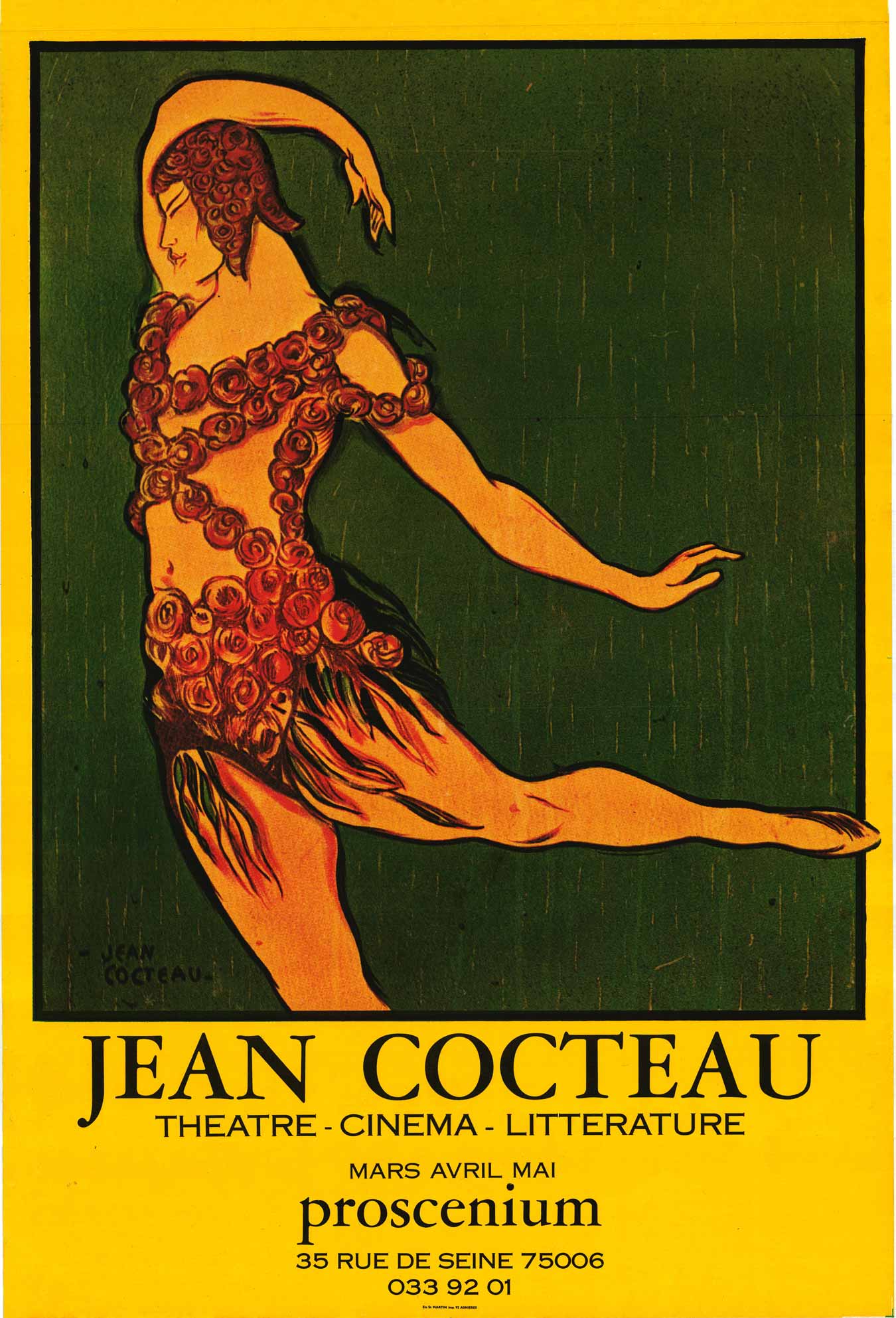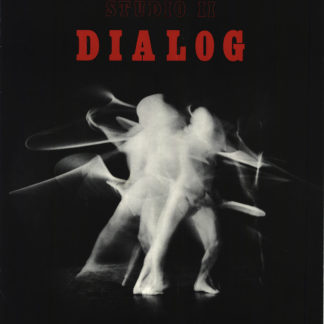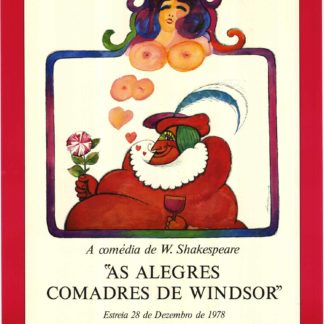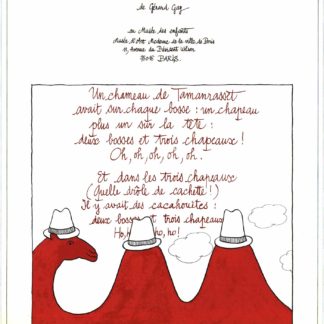Description
Cocteau was born in Maisons-Laffitte, Yvelines, a town near Paris, to Georges Cocteau and his wife, Eugénie Lecomte; a socially prominent Parisian family. His father was a lawyer and amateur painter, who committed suicide when Cocteau was nine. From 1900–1904, Cocteau attended the Lycée Condorcet where he met and began a relationship with schoolmate Pierre Dargelos, who would later reappear throughout Cocteau’s oeuvre. Leaving home at fifteen years of age, four years later he was to published his first volume of poems, Aladdin’s Lamp. Cocteau soon became known in Bohemian artistic circles as The Frivolous Prince, the title of a volume he published at twenty-two. Edith Wharton described him as a man “to whom every great line of poetry was a sunrise, every sunset the foundation of the Heavenly City…”
In his early twenties, Cocteau became associated with the writers Marcel Proust, André Gide, and Maurice Barrès. In 1912, he collaborated with Léon Bakst on Le Dieu bleu for the Ballets Russes; the principal dancers being Tamara Karsavina and Vaslav Nijinsky. During World War I Cocteau served in the Red Cross as an ambulance driver. This was the period in which he met the poet Guillaume Apollinaire, artists Pablo Picasso and Amedeo Modigliani, and numerous other writers and artists with whom he later collaborated. Russian impresario Sergei Diaghilev persuaded Cocteau to write a scenario for a ballet, which resulted in Parade in 1917. It was produced by Diaghilev, with sets by Picasso, the libretto by Apollinaire and the music by Erik Satie. “If it had not been for Apollinaire in uniform,” wrote Cocteau, “with his skull shaved, the scar on his temple and the bandage around his head, women would have gouged our eyes out with hairpins.”
An important exponent of avant-garde art, Cocteau had great influence on the work of others, including a group of composers known as Les six. In the early twenties, he and other members of Les six frequented a wildly popular bar named Le Boeuf sur le Toit, a name that Cocteau himself had a hand in picking. The popularity was due in no small measure to the presence of Cocteau and his friends.
In 1918 he met the French poet Raymond Radiguet. They collaborated extensively, socialized, and undertook many journeys and vacations together. Cocteau also got Radiguet exempted from military service. Admiring of Radiguet’s great literary talent, Cocteau promoted his friend’s works in his artistic circle and arranged for the publication by Grasset of Le Diable au corps (a largely autobiographical story of an adulterous relationship between a married woman and a younger man), exerting his influence to have the novel awarded the “Nouveau Monde” literary prize. Some contemporaries and later commentators thought there might have been a romantic component to their friendship. Cocteau himself was aware of this perception, and worked earnestly to dispel the notion that their relationship was sexual in nature.
There is disagreement over Cocteau’s reaction to Radiguet’s sudden death in 1923, with some claiming that it left him stunned, despondent and prey to opium addiction. Opponents of that interpretation point out that he did not attend the funeral (he generally did not attend funerals) and immediately left Paris with Diaghilev for a performance of Les noces (The Wedding) by the Ballets Russes at Monte Carlo. Cocteau himself much later characterised his reaction as one of “stupor and disgust.” His opium addiction at the time, Cocteau said, was only coincidental, due to a chance meeting with Louis Laloy, the administrator of the Monte Carlo Opera. Cocteau’s opium use and his efforts to stop profoundly changed his literary style. His most notable book, Les Enfants Terribles, was written in a week during a strenuous opium weaning. In Opium: Journal of drug rehabilitation, he recounts the experience of his recovery from opium addiction in 1929. His account, which includes vivid pen-and-ink illustrations, alternates between his moment-to-moment experiences of drug withdrawal and his current thoughts about people and events in his world. Cocteau was supported throughout his recovery by his friend and correspondent, Catholic philosopher Jacques Maritain. Under Maritain’s influence Cocteau made a temporary return to the sacraments of the Catholic Church. He again returned to the Church later in life and undertook a number of religious art projects.
On June 15, 1926 Cocteau’s play Orphée was staged in Paris. It was quickly followed by an exhibition of drawings and “constructions” called Poésie plastique–objets, dessins. Cocteau wrote the libretto for Igor Stravinsky’s opera-oratorio Oedipus rex, which had its original performance in the Théâtre Sarah Bernhardt in Paris on 30 May 1927. In 1929 one of his most celebrated and well known works, the novel Les Enfants terribles was published.
In 1930 Cocteau made his first film The Blood of a Poet, publicly shown in 1932. Though now generally accepted as a surrealist film, the surrealists themselves did not accept it as a truly surrealist work. Although one of Cocteau’s best known works the 1930s is notable rather for a number of stage plays; notably La Voix humaine and Les Parents terribles, which was a popular success. His 1934 play La Machine infernal was Cocteau’s stage version of the Oedipus legend and is considered to be his greatest work for the theater. During this period Cocteau also published two volumes of journalism, including Mon Premier Voyage: Tour du Monde en 80 jours, a neo-Jules Verne around the world travel reportage he made for the newspaper Paris-Soir.
Biographer James S. Williams describes Cocteau’s politics as “naturally Right-leaning.” During the Nazi occupation of France, he was in a “round-table” of French and German intellectuals who met at the Georges V Hotel in Paris, including Cocteau, the writers Ernst Jünger, Paul Morand and Henry Millon de Montherlant, the publisher Gaston Gallimard and the Nazi legal scholar Carl Schmitt.
His friend Arno Breker convinced him that Adolf Hitler was a pacifist and patron of the arts with France’s best interests in mind. In his diary, Cocteau accused France of disrespect towards Hitler and speculated on the Führer’s sexuality. Cocteau effusively praised Breker’s sculptures in an article entitled ‘Salut à Breker’ published in 1942. This piece caused him to be arraigned on charges of collaboration after the war, though he was cleared of any wrongdoing and had used his contacts to his failed attempt to save friends such as Max Jacob.
Cocteau’s later years are mostly associated with his films. Cocteau’s films, most of which he both wrote and directed, were particularly important in introducing the avant-garde into French cinema and influenced to a certain degree the upcoming French New Wave genre.
Following The Blood of a Poet (1930), his best known films include Beauty and the Beast (1946), Les Parents terribles (1948), and Orpheus (1949). His final film, Le Testament d’Orphée (The Testament of Orpheus) (1960), featured appearances by Picasso and matador Luis Miguel Dominguín, along with Yul Brynner, who also helped finance the production.
In 1956 Cocteau decorated the Chapelle Saint-Pierre in Villefranche-sur-Mer with mural paintings. The following year he also decorated the marriage hall at the Hôtel de Ville in Menton.
Jean Cocteau never hid his homosexuality. He was the author of the mildly homoerotic and semi-autobiographical Le livre blanc (translated as The White Paper or The White Book), published anonymously in 1928. He never repudiated its authorship and a later edition of the novel features his foreword and drawings. The novel begins:
As far back as I can remember, and even at an age when the mind does not yet influence the senses, I find traces of my love of boys. I have always loved the strong sex that I find legitimate to call the fair sex. My misfortunes came from a society that condemns the rare as a crime and forces us to reform our inclinations.
Frequently his work, either literary (Les enfants terribles), graphic (erotic drawings, book illustration, paintings) or cinematographic (The Blood of a Poet, Orpheus, Beauty and the Beast), is pervaded with homosexual undertones, homoerotic imagery/symbolism or outright camp. In 1947 Paul Morihien published a clandestine edition of Querelle de Brest by Jean Genet, featuring 29 very explicit erotic drawings by Cocteau. In recent years several albums of Cocteau’s homoerotica have been available to the general public.
Cocteau died of a heart attack at his château in Milly-la-Forêt, Essonne, France, on 11 October 1963 at the age of 74. His friend, French singer Édith Piaf, died the day before but that was announced on the morning of Cocteau’s day of death; it has been said that his heart failed upon hearing of Piaf’s death. Actually, according to author Roger Peyrefitte, since early that year Cocteau had been devastated after a breach with his longtime friend and extremely wealthy and generous patroness Francine Weisweiller: since 1960 she was having an affair with a minor writer, which cooled her off towards Cocteau. He had a very severe heart attack on April 22.
According to his wishes Cocteau is buried beneath the floor of the Chapelle Saint-Blaise des Simples in Milly-la-Forêt. The epitaph on his gravestone set in the floor of the chapel reads: “I stay with you” (“Je reste avec vous”).






Reviews
There are no reviews yet.